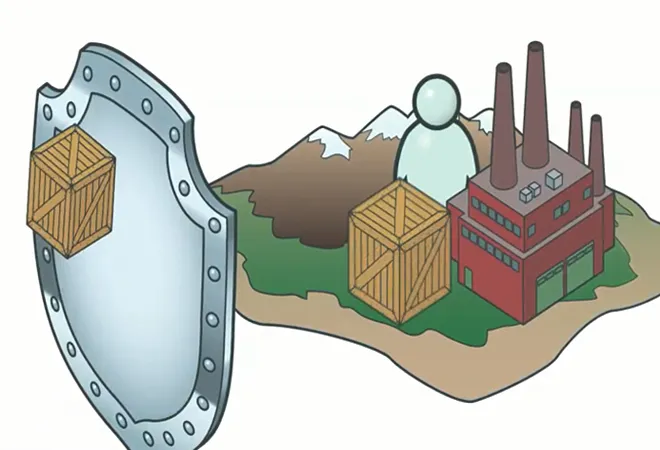When Narendra Modi won a historic landslide victory in 2014, many argued that he would take the process of economic reforms forward. Particularly excited were those exhausted by years of making the case for structural change in a political environment where multiple players appeared to possess veto powers on progress. It was considered likely that, given his mandate, Mr Modi would be able to take bigger and more influential steps than had hitherto been possible.
The sad twist is this: The occasions that Mr Modi has shifted policy clearly, the steps so taken have not been the sort that reformists hoped for or expected. Remember that the biggest policy innovation of his government has been demonetisation of the currency, a step that is — for good reason — not generally part of the economists’ arsenal, and therefore could hardly be sold as addressing the unfinished reform agenda.
We are now faced with another major shift, as the implications of the Budget slowly filter through the economy. This Budget, and Mr Modi’s administration more generally, represent an epochal shift: For the first time in a generation, the Indian economy is closing itself off.
Budget-watchers had come to ignore the annexures to the speech, which listed out sector-specific tariffs or import taxes. In the bad old days of the 1980s, that was where the stories were buried — which sector gained and which lost, who would make a fortune and who lose it. However, in this Budget, the annexures were once again where the action was. As many as 45 different product lines had their tariffs hiked, some by as much as 40 percentage points. In addition, a 10 per cent surcharge was imposed on the aggregate Customs duty across the board.
The logic for these sectoral increases was clearly spelled out: They were attempts to protect domestic manufacturing from foreign competition. In industries as far apart as kites, clocks, auto components, and smartphones, it has been argued by the finance ministry that Indian industries will need tariff barriers in order to survive. (An additional reason for the surcharge has been outlined by a senior bureaucrat in the finance ministry. Since countervailing duty has been subsumed in the integrated GST or IGST, which is shared with the states, a surcharge on the Customs duty was needed in order to protect the revenue of the central government. What this rationale implies about the statism and short-sightedness of economic policy thinking in this government should be obvious to the reader.)'
Such thinking is an epoch-defining reversal. Laying out his priorities in the generation-defining Budget speech of 1991, Manmohan Singh had said it was important to “expose Indian industry to competition from abroad in a phased manner” because “our entrepreneurs are second to none. Our industry has come of age.” This belief underlay the steps towards liberalising external trade and investment taken by Dr Singh, and by subsequent governments and finance ministers. Under Mr Modi and Arun Jaitley, this movement towards a more integrated India has been reversed. It is as if the lessons of the 1970s and 1980s have been forgotten. Infant industry protection, industrial policy, and so on are all very well when they are meant to overcome market failures. There can be an argument made for them then. When they are meant to overcome failures of the state — such as those currently holding back Indian competitiveness — they cannot work.
Since some have chosen to claim that Indian protectionism is acceptable as, on the one hand, other countries have sought to increase tariff barriers and, on the other, that it would aid in the creation of jobs, let us dispassionately recall the arguments as to why such protectionism is bound to fail.
First of all, high tariff barriers will not aid in the creation of value within India. Protection incentivises the creation of “screwdriver plants”, which arbitrage the opportunities provided by protections for domestic industry to conduct low-value assembly within the country.
High-value-added processes will continue to be located offshore.
Second, import protection hurts consumers. Not only will they have to pay more for world-class goods that they would normally prefer to buy, but even the lower-quality goods produced domestically will raise their prices. If a foreign good costs Rs x+t after the introduction of a tariff t, then a domestic and less preferred substitute that earlier sold for Rs y, where y
Third, it hurts exports, though this effect may not be completely obvious at first. It has, however, been understood by economists since Abba Lerner explained it in 1936. He demonstrated that higher tariffs meant that imports become more expensive than domestic goods. This also means exports become less remunerative as compared to domestic goods, creating a disincentive to export. Higher tariffs also raise costs throughout the economy, which means that exports are generally rendered less competitive than earlier. And, of course, tariffs put upward pressure on the exchange rate, and an even more over-valued rupee will further hit exporters. Many studies of protected economies show that about half of any import protection can be shown to have an effect equivalent to a direct tax on exporters.
Fourth, import protection can hurt workers. The argument is straightforward if imports are capital-intensive. In that case, a higher tariff lowers the return to labour — wages — when compared to the return to capital. Even more generally, recent empirical work has shown that, for developing countries, the real wage is affected positively by an increase in imports and negatively by an increase in tariffs.
Fifth, higher tariffs hold back India’s integration into global supply chains, which are typically decentralised and multi-national. A country with higher tariffs than others is less likely to be able to become part of the value chain. If India does not do so, then it will need to create a modern middle class purely on the back of its own domestic demand. This outcome is not just unlikely but impossible.
Sixth, higher protection for specific sectors leads to rent-seeking, in which a significant proportion of resources are diverted away from productive activity to instead lobby for additional protection for a particular sector. This is also why “temporary” protections are never really temporary; a lobby of uncompetitive domestic producers is created who will constantly argue that a removal of protections will hurt their output and employment.
These negative effects of protectionism are widely understood. Those who wish to blindly ape the Donald Trump-era United States’ trade policy clearly have never bothered to think hard about the economic consequences of their actions in India, or even about our own recent economic history. Mr Modi’s government, whether out of ignorance, incompetence, or some other reason, has reversed the direction of India’s economic reform process, and taken a giant step backward. All those who thought before 2014 he would be more reformist than his predecessors should introspect as to why they got it so wrong.
This commentary originally appeared in Business Standard.
The views expressed above belong to the author(s). ORF research and analyses now available on Telegram! Click here to access our curated content — blogs, longforms and interviews.




 PREV
PREV


